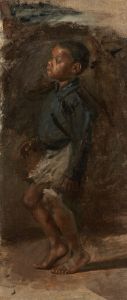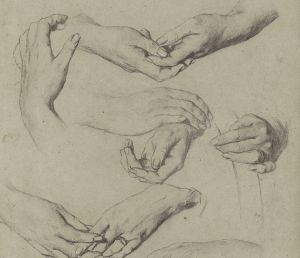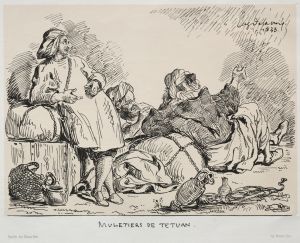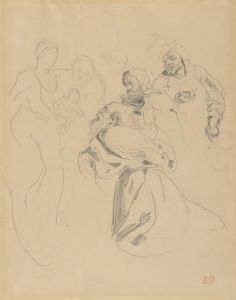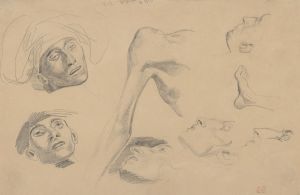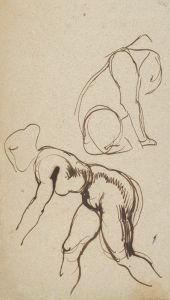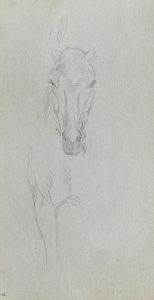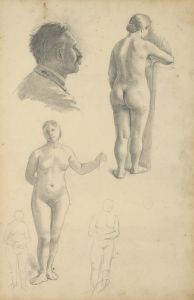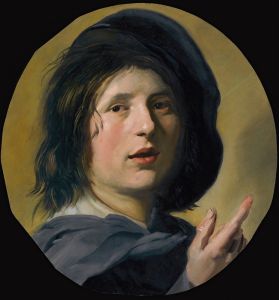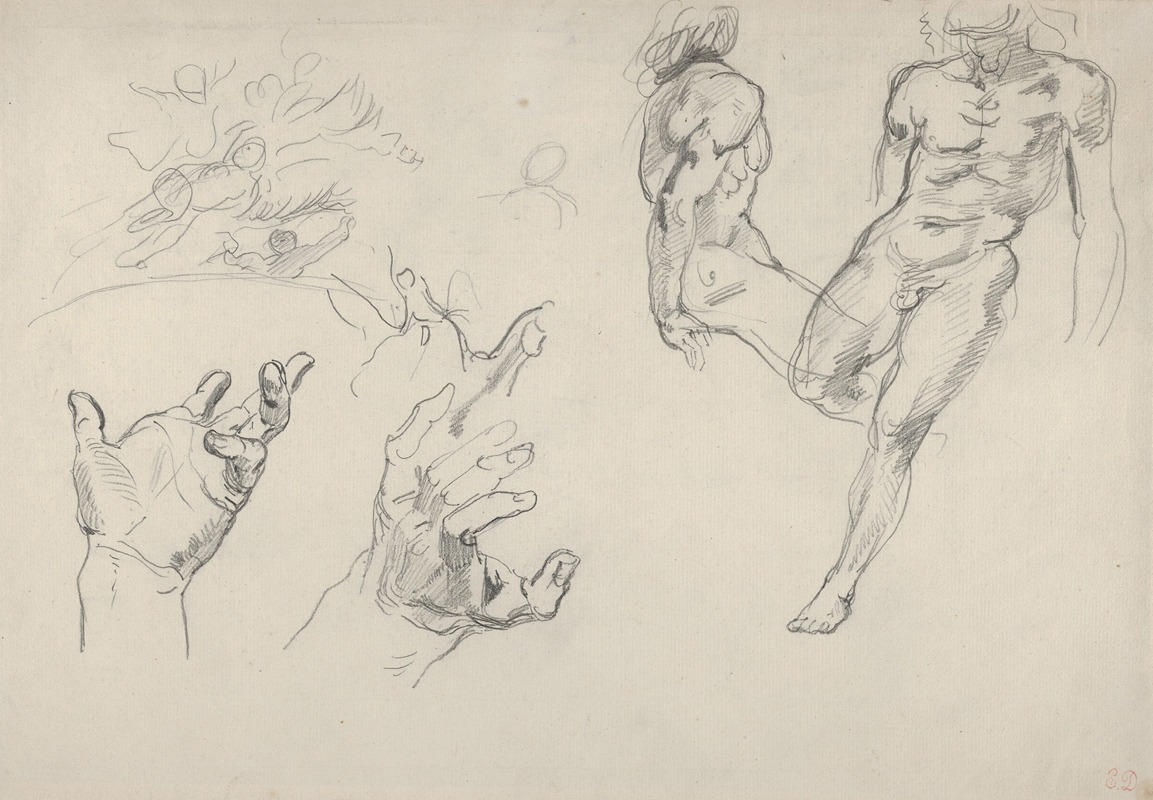
Studies of Hands and Figures for the Salon du Roi, Palais Bourbon
A hand-painted replica of Eugène Delacroix’s masterpiece Studies of Hands and Figures for the Salon du Roi, Palais Bourbon, meticulously crafted by professional artists to capture the true essence of the original. Each piece is created with museum-quality canvas and rare mineral pigments, carefully painted by experienced artists with delicate brushstrokes and rich, layered colors to perfectly recreate the texture of the original artwork. Unlike machine-printed reproductions, this hand-painted version brings the painting to life, infused with the artist’s emotions and skill in every stroke. Whether for personal collection or home decoration, it instantly elevates the artistic atmosphere of any space.
Eugène Delacroix, a leading figure of the French Romantic movement, is renowned for his dynamic compositions and expressive use of color. Among his many works, "Studies of Hands and Figures for the Salon du Roi, Palais Bourbon" stands out as a testament to his meticulous approach to preparatory studies and his dedication to capturing the human form in its most expressive states.
This particular study was created as part of Delacroix's preparation for a larger commission at the Palais Bourbon, the seat of the French National Assembly. The Salon du Roi was one of the grand rooms within the Palais, and Delacroix was tasked with creating a series of murals that would adorn its walls. These murals were intended to celebrate the achievements and virtues of the French monarchy, reflecting the political and cultural aspirations of the period.
"Studies of Hands and Figures" showcases Delacroix's skill in rendering the human anatomy with precision and emotion. The study likely includes various sketches of hands and figures, each capturing different gestures and poses. Delacroix's focus on hands is particularly noteworthy, as hands are often considered one of the most challenging aspects of human anatomy to depict accurately. Through these studies, Delacroix explored the expressiveness of hands, which can convey a wide range of emotions and actions, from strength and power to delicacy and grace.
The figures in the study would have been used to populate the grand historical and allegorical scenes that Delacroix envisioned for the Salon du Roi. His approach to these studies was methodical; he often drew from live models and classical sculptures to ensure anatomical accuracy and dynamic composition. Delacroix's ability to capture movement and emotion in his figures was a hallmark of his style, setting him apart from his contemporaries and earning him a lasting place in art history.
The commission for the Salon du Roi was a significant project for Delacroix, as it allowed him to work on a grand scale and contribute to the decoration of a prominent government building. His work in the Palais Bourbon is part of a broader tradition of state-sponsored art that sought to glorify the nation and its leaders through monumental works. Delacroix's murals, informed by studies like "Studies of Hands and Figures," were celebrated for their vibrant color, dramatic compositions, and the emotional intensity that characterized the Romantic movement.
While the specific details of each sketch within "Studies of Hands and Figures" are not widely documented, the study as a whole reflects Delacroix's commitment to his craft and his ability to convey complex narratives through the human form. His preparatory works are invaluable for understanding his artistic process and the development of his larger compositions.
In summary, "Studies of Hands and Figures for the Salon du Roi, Palais Bourbon" exemplifies Eugène Delacroix's dedication to capturing the essence of human expression and movement. These studies played a crucial role in the creation of his murals for the Palais Bourbon, contributing to his legacy as one of the foremost artists of the Romantic era.






